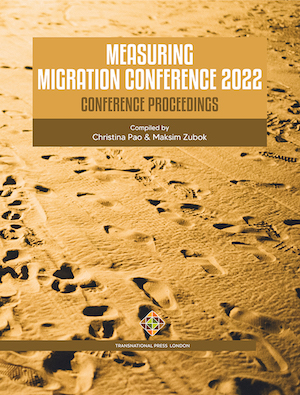Use of non-traditional data sources to nowcast migration trends through Artificial Intelligence technologies
Use of non-traditional data sources to nowcast migration trends through Artificial Intelligence technologies
Author(s): Diletta Goglia, Laura Pollacci, Alina Sîrbu
Subject(s): Migration Studies, ICT Information and Communications Technologies, Asylum, Refugees, Migration as Policy-fields
Published by: Transnational Press London
Keywords: non-traditional; data sources; nowcast migration trends; Artificial Intelligence technologies;
Summary/Abstract: In recent years the pursuit of original drivers and methods is becoming an increasing requirement for migration studies, considering the new technologies used to characterise and understand the human migration phenomenon. In addition to the traditional data typically used in migration studies (e.g., indicators related to the labour market or economic status, measures obtained from surveys and official statistics, either from national censuses or from the population registries), many researchers like Bosco et al. (2022), Fiorio et al. (2017), Gendronneau et al. (2019), Jisu, Sîrbu, Rossetti, Giannotti, and Rapoport (2021), Salah (2021), Spyratos et al. (2018), Sîrbu et al. (2021), Zagheni, Garimella, Weber, and State (2014), Zagheni, Polimis, Alexander, Weber, and Billari (2018), Zagheni, Weber, and Gummadi (2017), have proposed to employ non-traditional data sources to study migration. These can consist in news data, satellite data, but also in digital traces of humans generated by using internet services, mobile phones, IoT devices, fidelity cards, online social networks and many others. This unconventional approach is intended to find an alternative methodology to answer open questions about the human migration framework (i.e., nowcasting flows and stocks, studying the integration of multiple sources and knowledge, and investigating migration drivers). The new data have the advantage of timeliness and large geographical coverage, but also disadvantages in terms of selection bias and amount of resources required to process, as reported by Sîrbu et al. (2021) and Pollacci, Milli, Bircan, and Rossetti (2022). Therefore, models extracted from these data need to be carefully validated, typically with traditional data sources. In this context of meaningful data combination, many types of data exist, still very scattered and heterogeneous, making integration far from straightforward.
Book: Measuring Migration Conference 2022 Proceedings
- Page Range: 15-21
- Page Count: 7
- Publication Year: 2022
- Language: English
- Content File-PDF

